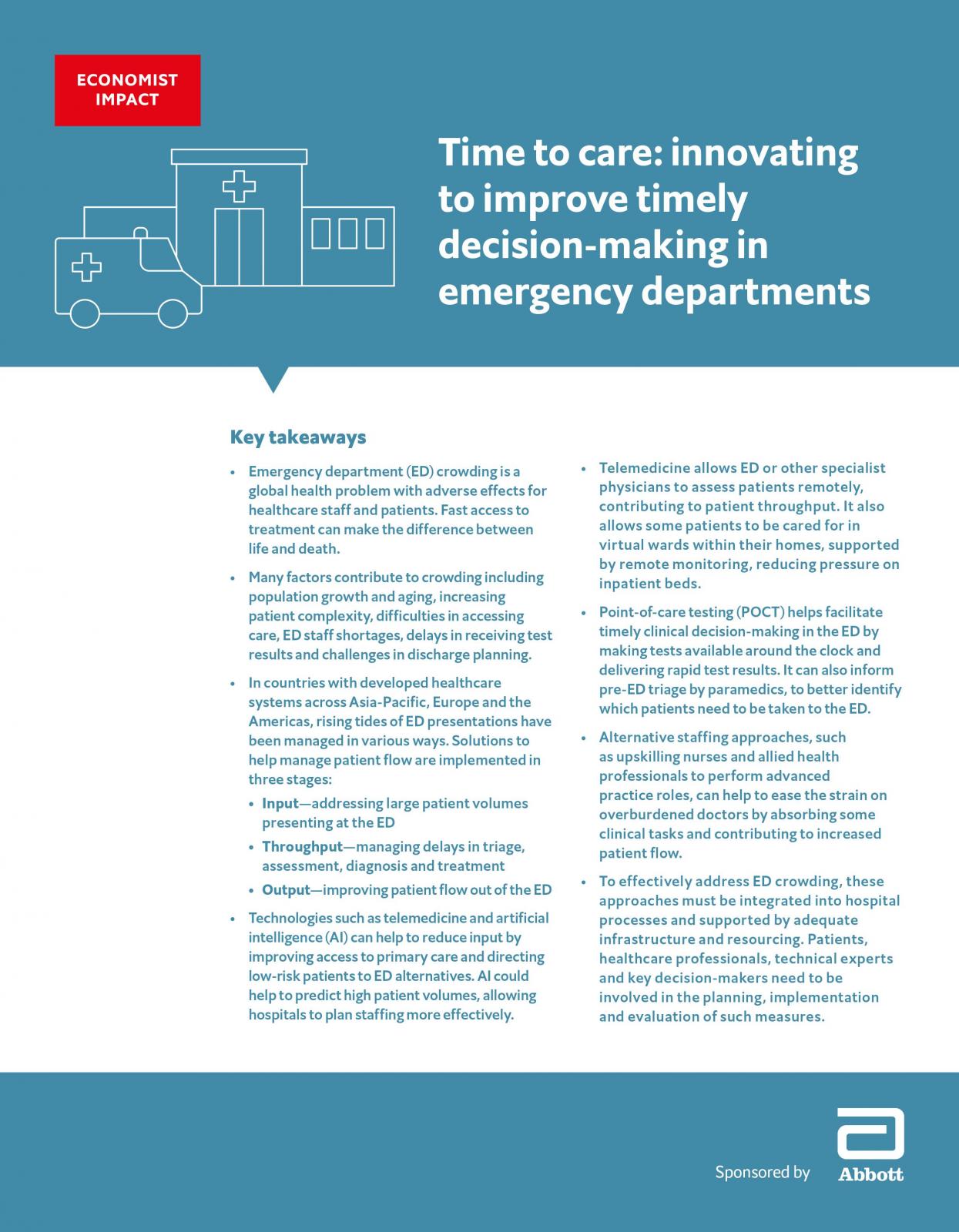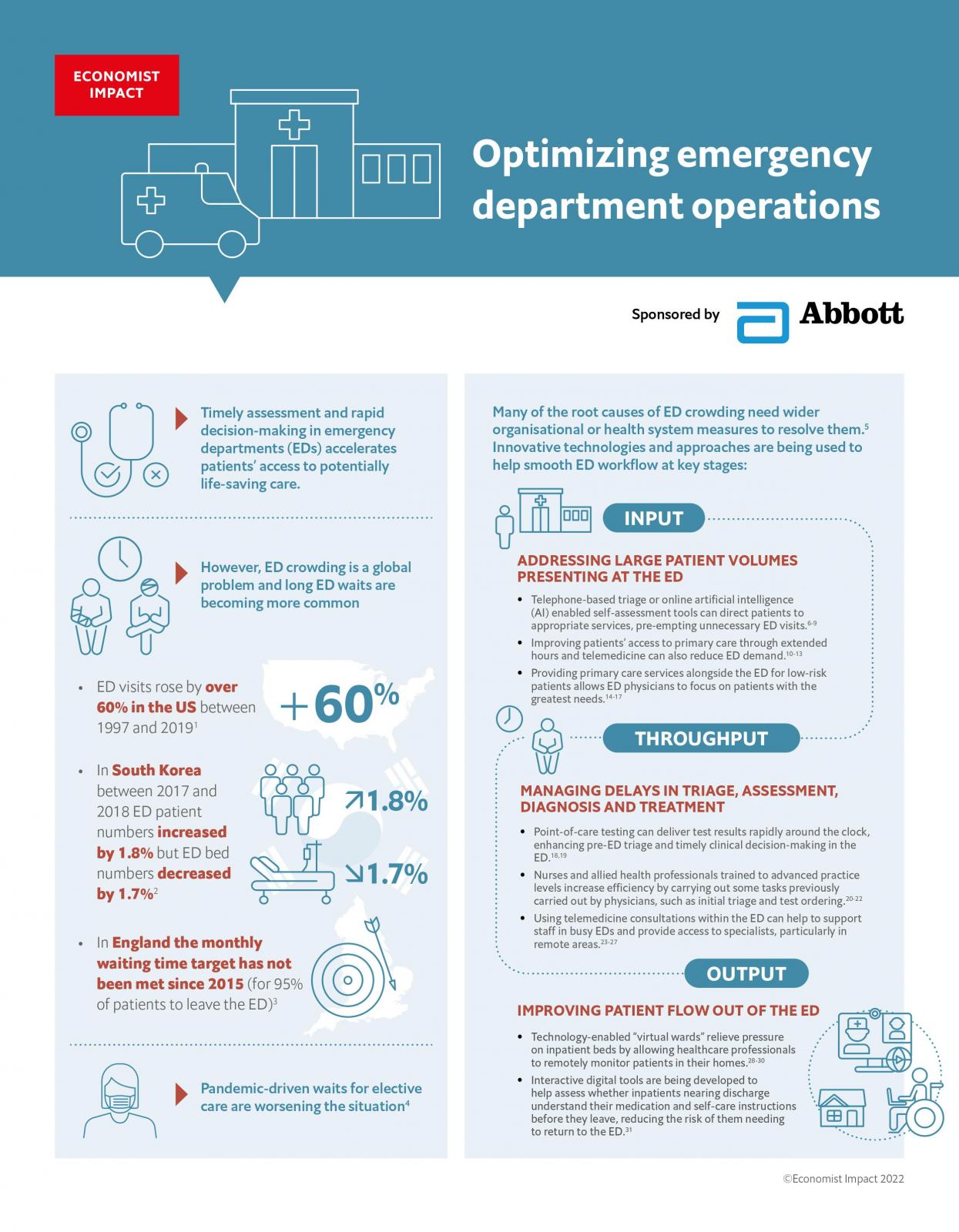However, emergency department crowding is a global problem and long waits are becoming more common.
This article is part of a series on improving decision-making across different settings and contexts. It highlights the challenges that overcrowding in the emergency department (ED) creates for healthcare staff and patients, and explores some of the innovative approaches and technologies being used to help smooth workflow.
Key takeaways include:
-
Solutions to stem the rising tides of ED presentations have been implemented in three key stages:
-
Input – addressing large patient volumes presenting at the ED.
-
Throughput – managing delays in triage, assessment, diagnosis and treatment.
-
Output – improving patient flow out of the ED.
-
-
Technologies such as telemedicine and artificial intelligence (AI) can help to reduce input by improving access to primary care and directing low-risk patients to ED alternatives. AI could help to predict high patient volumes, allowing hospitals to plan staffing more effectively.
-
Telemedicine allows ED or other specialist physicians to assess patients remotely, contributing to patient throughput. It also allows some patients to be cared for in virtual wards within their homes, supported by remote monitoring, reducing pressure on inpatient beds.
-
Point-of-care testing helps facilitate timely clinical decision-making in the ED by making rapid tests available around the clock and delivering faster test results. It can also inform pre-ED triage by paramedics, to better identify which patients need to be taken to the ED.
-
Alternative staffing approaches, such as upskilling nurses and allied health professionals to perform advanced practice roles, can help to ease the strain on overburdened doctors by absorbing some clinical tasks and contributing to increased patient flow.
-
To effectively address ED crowding, these approaches need to be integrated into hospital processes and supported by adequate infrastructure and resourcing.







